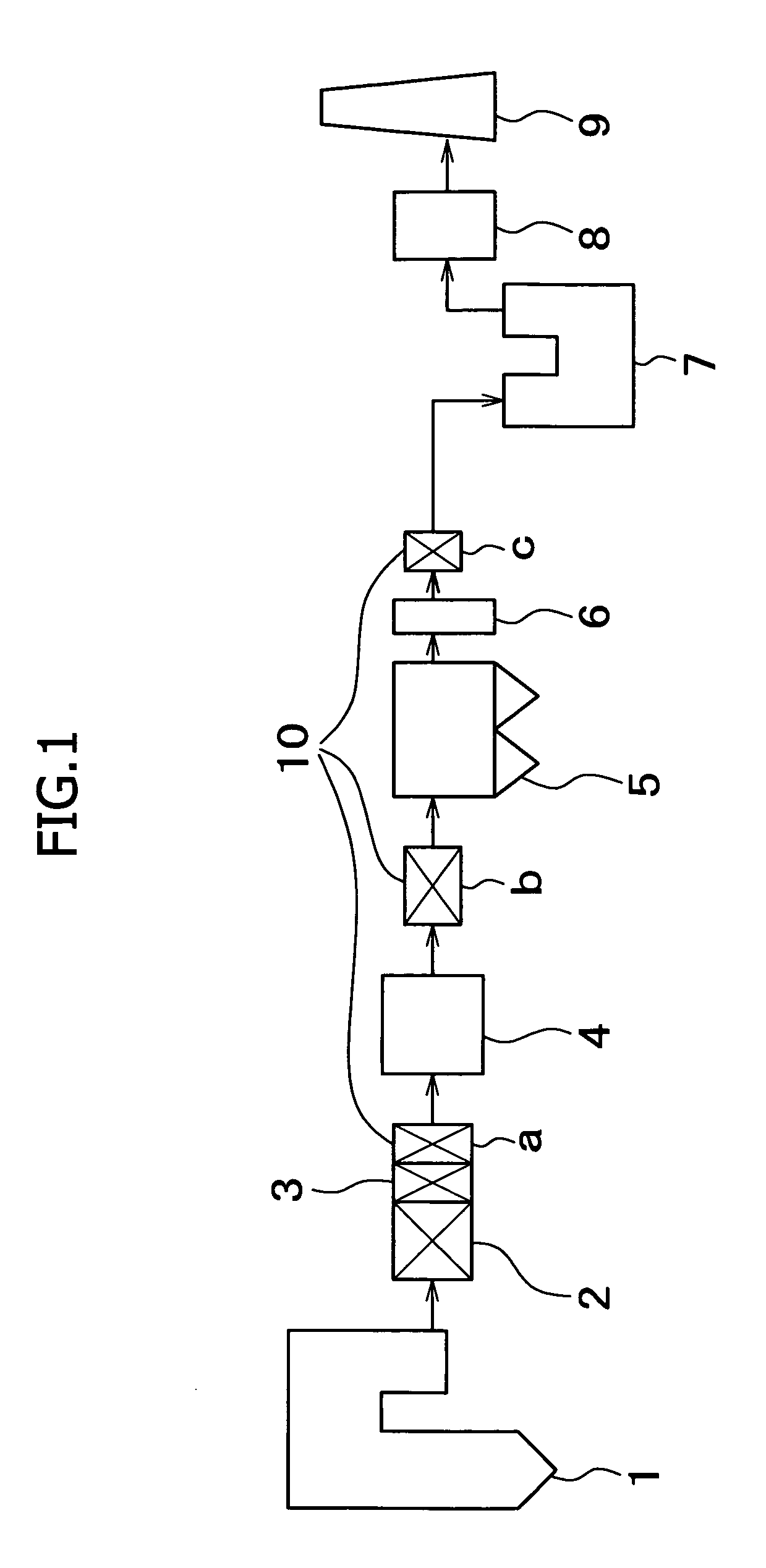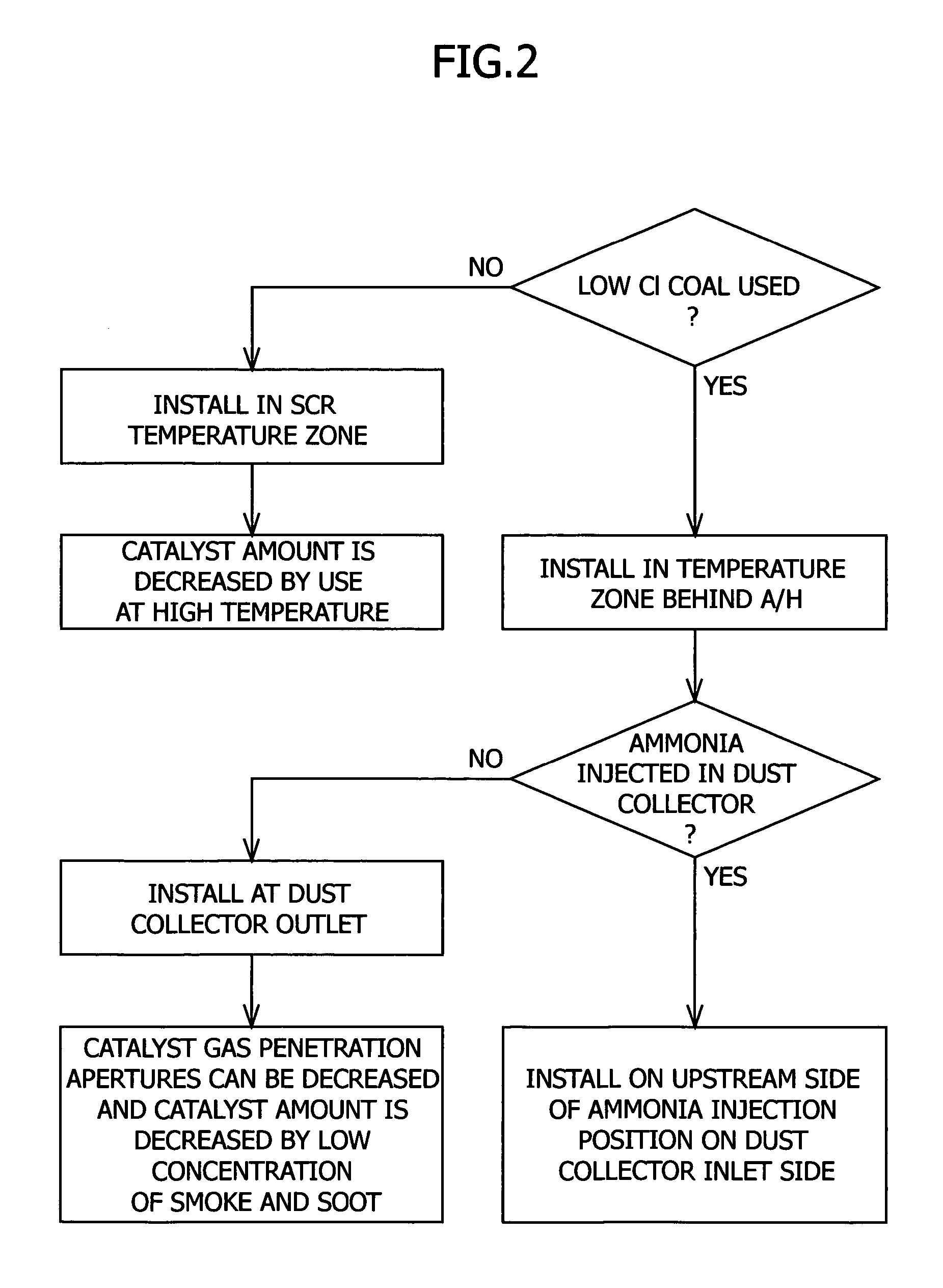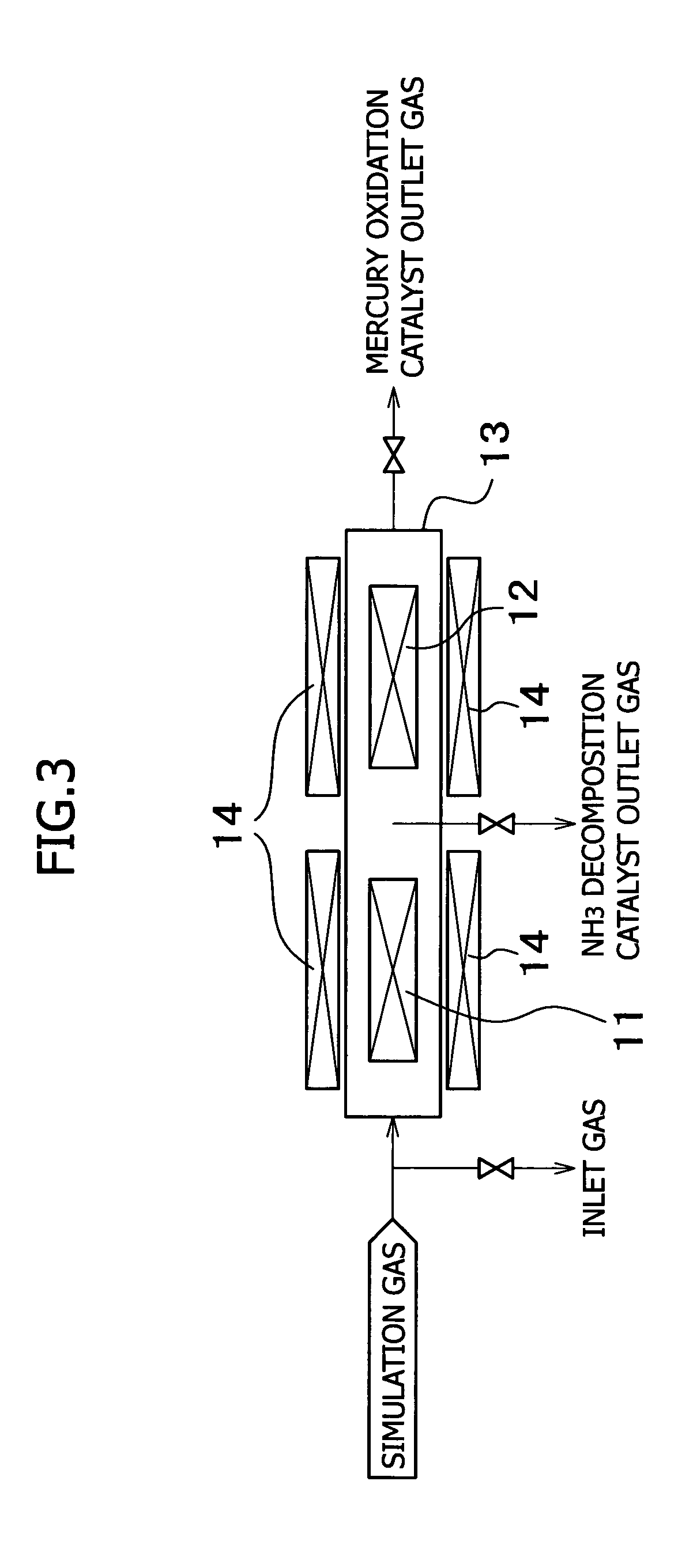Method for removing mercury in exhaust gas
a technology of exhaust gas and mercury, which is applied in the direction of physical/chemical process catalysts, emission prevention, separation processes, etc., can solve the problems of increasing utility costs and occurrence of material corrosion, increasing catalyst performance, and catalyst itself being closed by the adherend, etc., to achieve enhanced catalyst durability and reduce catalyst amount
- Summary
- Abstract
- Description
- Claims
- Application Information
AI Technical Summary
Benefits of technology
Problems solved by technology
Method used
Image
Examples
example 1
[0058]A test was carried out to evaluate the oxidation rate of mercury and the decomposition rate of ammonia by using an apparatus for removing mercury in exhaust gas which is shown in FIG. 3.
[0059]In the apparatus of this example 1, H2O, CO2, O2, NH3 and HCl were added to N2 gas, and the vapor of metallic mercury was mixed to prepare a simulation gas. The simulation gas was introduced into a reactor 13, and was allowed to pass through an NH3 decomposition catalyst 11 and a mercury oxidation catalyst 12 provided in the reactor 13. For the catalysts, the temperature thereof was controlled by an electric heater 14. An inlet gas, an outlet gas of the NH3 decomposition catalyst 11, and an outlet gas of the mercury oxidation catalyst 12 were sampled.
[0060]The test conditions were as described below: the content of added gases were H2O: 7%, CO2: 12%, O2: 5%, NH3: 10 ppm, and HCl: 10 ppm, the mercury concentration was Hg: 30 μg / m3N, the reactor temperature was 350° C. at ordinary pressure,...
example 2
[0064]A test was carried out to evaluate the oxidation rate of mercury and the decomposition rate of ammonia by using an apparatus for removing mercury in exhaust gas which is shown in FIG. 4.
[0065]In the apparatus of this example 2 as well, H2O, CO2, O2, NH3 and HCl were added to N2 gas, and the vapor of metallic mercury was mixed to prepare a simulation gas. The simulation gas was first introduced into a reactor 16, and was allowed to pass through the NH3 decomposition catalyst 11 provided in the reactor 16, and the temperature of the catalyst was controlled by the electric heater 14. The gas coming out of the reactor 16 passed through a cooler 15, and then was introduced into a next reactor 17. The gas was allowed to pass through the mercury oxidation catalyst 12 provided in the reactor 17, and the temperature of the catalyst was controlled by the electric heater 14. An inlet gas, an outlet gas of the NH3 decomposition catalyst 11, and an outlet gas of the mercury oxidation catal...
PUM
| Property | Measurement | Unit |
|---|---|---|
| Temperature | aaaaa | aaaaa |
| Temperature | aaaaa | aaaaa |
| Temperature | aaaaa | aaaaa |
Abstract
Description
Claims
Application Information
 Login to View More
Login to View More - R&D
- Intellectual Property
- Life Sciences
- Materials
- Tech Scout
- Unparalleled Data Quality
- Higher Quality Content
- 60% Fewer Hallucinations
Browse by: Latest US Patents, China's latest patents, Technical Efficacy Thesaurus, Application Domain, Technology Topic, Popular Technical Reports.
© 2025 PatSnap. All rights reserved.Legal|Privacy policy|Modern Slavery Act Transparency Statement|Sitemap|About US| Contact US: help@patsnap.com



